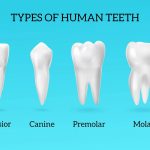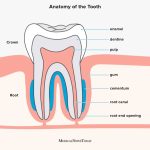Brown Gum Line: Understanding the Causes of Teeth Discoloration

A brown gum line is an alarming sight for many individuals who are concerned about their oral health. It is an indication of teeth discoloration that can result in an unsightly appearance, and can also impact a person’s confidence and self-esteem. The discoloration can occur gradually over time, or it may appear suddenly, leading to a sense of panic and confusion. Understanding the causes of teeth discoloration, particularly a brown gum line, is essential to prevent it from getting worse and to maintain healthy teeth and gums. There are several causes of teeth discoloration, including poor oral hygiene, smoking, certain medications, and age. However, a brown gum line is typically caused by a buildup of plaque and tartar on the teeth and gums. Plaque is a sticky film of bacteria that forms on the teeth and can cause tooth decay, gum disease, and other oral health problems. When plaque is not removed through regular brushing and flossing, it can harden into tartar, which can only be removed by a dental professional. The brown color of the gum line is caused by the accumulation of these harmful substances, and it is an indication of an underlying oral health issue that needs to be addressed promptly.
Brown Gum Line is a dental condition characterized by the appearance of dark brown spots or patches on the gums around the teeth. This discoloration can be caused by several factors, including poor oral hygiene, tobacco use, certain medications, and genetics. In some cases, the brown coloration may be a sign of gum disease, which can cause the gums to recede and expose the root of the tooth. This condition can be unsightly and may lead to tooth loss if left untreated. However, with proper dental care and regular cleanings, it is possible to prevent and treat brown gum line and maintain healthy, beautiful teeth and gums.
Understanding teeth discoloration is crucial for maintaining good oral health and a bright, confident smile. Discoloration can occur due to a variety of reasons such as poor dental hygiene, smoking, aging, and certain medications. Brown gum lines are a common form of teeth discoloration that typically occur due to gum disease. It is important to identify the root cause of the discoloration to effectively treat it. Neglecting discolored teeth can lead to further dental problems such as tooth decay and gum disease. Therefore, educating oneself about the causes and prevention of teeth discoloration can lead to healthier oral habits and a brighter, more confident smile.
Causes of Brown Gum Line

The brown gum line is a common dental issue that affects many people worldwide. This condition refers to the darkening of the gum tissue surrounding the teeth, which can be caused by various factors. One of the primary causes of brown gum line is poor oral hygiene. Failure to brush and floss regularly can lead to the accumulation of plaque and tartar along the gum line, causing it to become discolored. Smoking and chewing tobacco can also cause the gums to turn brown as a result of the nicotine and tar in these products. Another cause of brown gum line is gum disease. This condition is caused by bacteria that accumulate in the mouth and form plaque. If left untreated, the bacteria can spread to the gums, causing inflammation and discoloration. Other factors that can contribute to brown gum line include certain medications, such as antihistamines and antibiotics, as well as genetics. People with a family history of gum disease or tooth discoloration may be more susceptible to developing brown gum line. Overall, maintaining good oral hygiene practices and visiting a dentist regularly can help prevent and treat brown gum line and other dental issues.
Poor oral hygiene is one of the primary causes of teeth discoloration, particularly the development of a brown gum line. When individuals fail to brush and floss their teeth regularly, plaque and tartar can build up on the teeth and gums. Over time, this buildup can cause the gums to recede, exposing the tooth roots and leading to the development of a brown gum line. Additionally, poor oral hygiene can lead to cavities and tooth decay, which can also cause discoloration. It is essential to maintain good oral hygiene practices, including brushing twice a day, flossing daily, and visiting a dentist regularly, to prevent the discoloration of teeth and gums and maintain overall oral health.
Smoking and tobacco use are notorious for causing brown gum lines and teeth discoloration. The nicotine and tar present in tobacco products can cause significant damage to the oral cavity, affecting the gum line’s appearance and causing staining on the teeth. Smoking also reduces blood flow in the gums, making it difficult for them to heal and fight off infections. Additionally, tobacco use increases the risk of developing gum disease, which can lead to tooth loss and further discoloration. Quitting smoking and avoiding tobacco products is essential for maintaining good oral health and preventing brown gum lines and other dental issues.
Certain medications can lead to the discoloration of teeth and the development of brown gum lines. These medications include antibiotics such as tetracycline and doxycycline, which can cause permanent staining of the teeth if taken during childhood. Other medications that have been linked to tooth discoloration include antihistamines, high blood pressure medications, and chemotherapy drugs. In addition to causing brown gum lines, these medications can also weaken the enamel of the teeth, making them more vulnerable to decay and other dental problems. If you are taking any medications that may be causing discoloration of your teeth or gums, it is important to speak with your dentist to determine the best course of action to maintain your dental health.
Aging is a natural process that affects all living organisms, including humans. As we age, our body undergoes various physiological changes, and this includes our teeth. The aging process can cause teeth to become discolored, with the brown gum line being a common occurrence. The brown gum line is caused by the accumulation of plaque and tartar on the teeth, which can lead to gum recession, exposing the darker root surface of the tooth. Additionally, as we age, the enamel on our teeth may become thinner, making it easier for stains to penetrate the tooth surface. While aging cannot be stopped, maintaining good oral hygiene can help prevent discoloration and other dental issues.
Genetics plays an important role in teeth discoloration, specifically in the development of brown gum line. This condition is known as gingival melanin pigmentation, caused by the accumulation of melanin in the gums. While it can be influenced by external factors such as smoking or poor oral hygiene, studies have shown that it is more common in individuals with darker skin tones due to genetic factors. The amount of melanin produced by the body is determined by genes, and those with higher levels of melanin tend to have darker gingival tissue. Understanding the genetic basis of brown gum line can help individuals with this condition better manage their oral health and seek appropriate treatment options.
Symptoms of Brown Gum Line
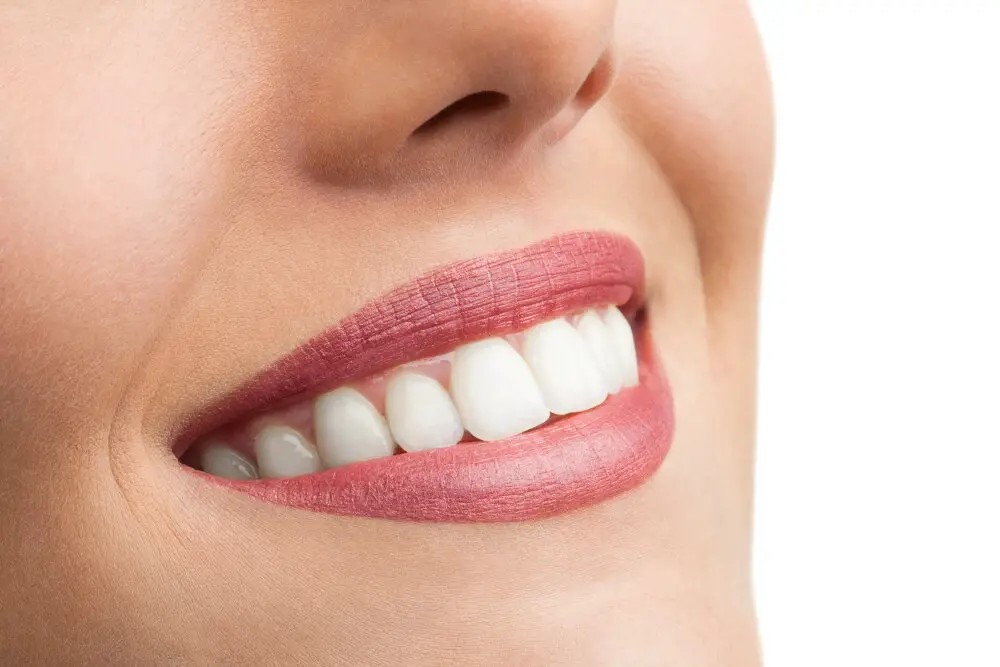
Brown gum line is a common dental issue that affects many individuals. The condition is characterized by a brown or dark line that appears at the base of the teeth near the gum. The discoloration can be caused by several factors, including poor oral hygiene, smoking, and certain medications. One of the most common symptoms of the condition is the brown or dark line that appears near the gum. The line may be uniform in color or may vary in intensity from one tooth to another. In some cases, the discoloration may also appear as small spots or patches on the gum line. Other symptoms of brown gum line include bad breath, bleeding gums, and gum inflammation. Individuals with brown gum line should seek dental treatment as soon as possible. Ignoring the condition can lead to more serious dental problems, including tooth decay, gum disease, and tooth loss. Treatment options for brown gum line include professional cleaning, teeth whitening procedures, and in some cases, gum surgery. Maintaining good oral hygiene practices, including brushing and flossing regularly, can also help prevent the condition from occurring. Additionally, avoiding smoking, limiting alcohol consumption, and reducing intake of foods and drinks that stain teeth can also help prevent brown gum line.
The appearance of a brown or black line along the gum line can be concerning and may indicate teeth discoloration. This discoloration can be caused by a variety of factors, including poor oral hygiene, smoking, certain medications, and even genetics. The brown or black line is often caused by the accumulation of tartar and plaque on the teeth, which can lead to gum disease and tooth decay. It is important to address this discoloration as soon as possible to prevent further damage to the teeth and gums. Regular dental cleanings and proper oral hygiene practices can help prevent and treat this discoloration.
Gum recession occurs when the border of the gum tissue surrounding the teeth wears away, exposing more of the tooth and root. This condition is a common dental problem that can cause tooth sensitivity, gum inflammation, and even tooth loss if left untreated. Gum recession can be caused by several factors, including brushing too hard, gum disease, aging, hormonal changes, and even genetics. People with gum recession may notice a brownish or yellowish line along the gum line, which can be a sign of tooth discoloration. Treatment options for gum recession include scaling and root planing, gum grafting, and lifestyle changes such as improving oral hygiene habits.
Sensitivity to hot or cold can be an indication of brown gum line, which is a common cause of teeth discoloration. It is important to understand that brown gum line occurs when the gums recede, exposing the roots of the teeth. This can happen due to a variety of reasons, such as periodontal disease, aggressive brushing, or even genetics. When the roots of the teeth are exposed, they become sensitive to hot and cold temperatures, causing discomfort to the individual. It is crucial to address brown gum line as it not only affects the aesthetics of the teeth, but it can also lead to further dental problems if left untreated.
Bad breath, also known as halitosis, is a common oral health problem that affects many people. It is often caused by poor dental hygiene and the buildup of bacteria in the mouth. Other factors that can contribute to bad breath include certain foods and drinks, smoking, dry mouth, and medical conditions such as gum disease and respiratory infections. Bad breath can be embarrassing and can negatively impact one’s self-esteem. To prevent bad breath, it is important to maintain good oral hygiene habits such as brushing twice a day, flossing, and using mouthwash. It is also important to visit the dentist regularly for checkups and cleanings to help prevent and treat any underlying dental conditions that may be contributing to bad breath.
Bleeding gums are a common dental problem that can be caused due to various reasons, including poor oral hygiene, gum disease, vitamin deficiencies, hormonal changes, and certain medications. It is essential to address the root cause of the issue to prevent further damage to the gums and teeth. Ignoring the problem can lead to the development of gingivitis, a mild form of gum disease that can cause inflammation and bleeding of the gums. Practicing good oral hygiene habits like brushing twice a day, flossing, and using an antiseptic mouthwash can help prevent bleeding gums. If the problem persists, it is advisable to seek professional dental care for appropriate treatment and management.
Prevention and Treatment of Brown Gum Line
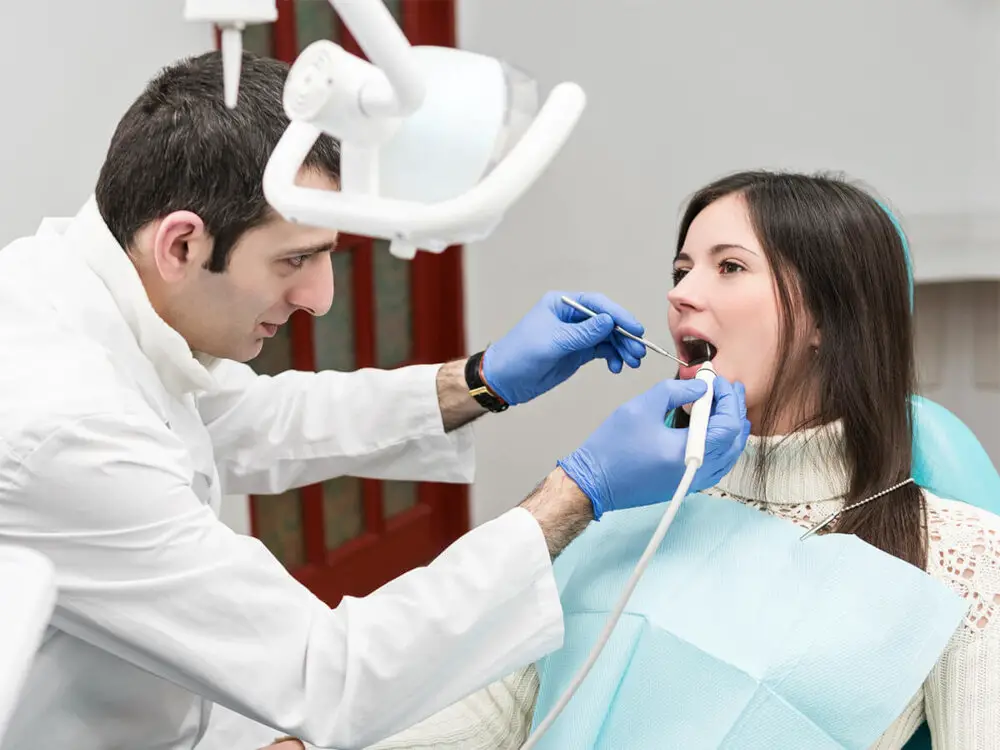
Prevention and treatment of brown gum line are essential to maintain the oral health. The best way to prevent the brown gum line is to maintain good oral hygiene. Brushing your teeth twice a day and flossing once a day can help remove the plaque from the gum line, which can cause discoloration. Additionally, regular visits to the dentist can help prevent the brown gum line. Dentists can perform professional cleanings that remove stubborn stains and plaque buildup. They can also identify early signs of gum disease, which can cause the gum line to darken. If you already have a brown gum line, there are several treatments available. One of the most common treatments is a professional teeth whitening procedure. This procedure involves applying a bleaching agent to the teeth, which can lighten the color of the gum line. Another treatment option is gum contouring. This procedure involves removing excess gum tissue to reveal more of the tooth’s surface, which can make the gum line appear less noticeable. In severe cases, a gum graft may be necessary. A gum graft involves taking tissue from another area of the mouth and grafting it onto the affected area to cover the brown gum line. It is essential to consult with a dentist to determine the best treatment option for your specific situation.
Brushing and flossing regularly are essential steps in maintaining good oral hygiene and preventing teeth discoloration. The accumulation of plaque and tartar on teeth, especially near the gum line, can cause brown discoloration, which can be unsightly and difficult to remove. Brushing twice a day with a fluoride toothpaste can help remove surface stains and prevent plaque buildup. However, flossing is equally important as it removes food particles and plaque from in-between teeth and along the gum line, where a toothbrush can’t reach. By incorporating these habits into your daily routine, you can maintain healthy teeth and gums and avoid the embarrassment of brown gum lines.
Quitting smoking and tobacco use is crucial not only for the overall health of the body, but also for the appearance of teeth. Tobacco use is a major cause of brown gum line, a type of teeth discoloration that results in brown or black lines along the gum line. The nicotine and other chemicals in tobacco products can cause staining and damage to the teeth and gums, leading to oral health problems such as gum disease and tooth decay. Quitting smoking and tobacco use can help prevent further damage to the teeth and gums and improve overall oral health. Additionally, quitting smoking can have a positive impact on overall health, reducing the risk of cancer, heart disease, and other serious health conditions.
If you’re struggling with brown gum line, one of the factors to consider is the medications you’re taking. Certain medications, such as antihistamines, antibiotics, and blood pressure medications, can cause teeth staining and discoloration. Fortunately, there are nonstaining alternatives available that can help reduce the risk of brown gum line. Switching to nonstaining medications can be an effective solution to prevent further discoloration of teeth and gums. It’s always best to consult with your doctor or dentist before changing any medication, to ensure it’s safe and effective for you. By taking proactive steps to address the issue, you can maintain a bright and healthy smile for years to come.
Professional teeth cleaning and gum treatment are essential components of oral hygiene. The procedure involves the removal of plaque and tartar buildup that can cause tooth decay, bad breath, and gum disease. The cleaning process involves the use of specialized tools that can reach areas that are difficult to clean with regular brushing and flossing. The gum treatment includes scaling and root planing, which is a deep cleaning of the gum line to remove bacteria and debris. This treatment can help prevent the brown gum line caused by gum disease, which is a common cause of teeth discoloration. By maintaining good oral hygiene, including regular professional teeth cleaning and gum treatment, you can keep your teeth and gums healthy and prevent tooth discoloration.
Gum graft surgery is a dental procedure that involves taking tissue from another part of the mouth, usually the palate, and grafting it onto the gum line to replace receding or damaged gums. The purpose of this surgery is to improve the appearance of the gums, protect the teeth from further damage, and prevent tooth loss. Gum graft surgery is typically performed under local anesthesia, and patients may experience some discomfort during the healing process. However, the long-term benefits of this procedure can be significant, as it can help to restore a healthy, natural-looking gum line and prevent further dental problems. If you are experiencing gum recession or discoloration, talk to your dentist about whether gum graft surgery may be right for you.
Other Causes of Teeth Discoloration
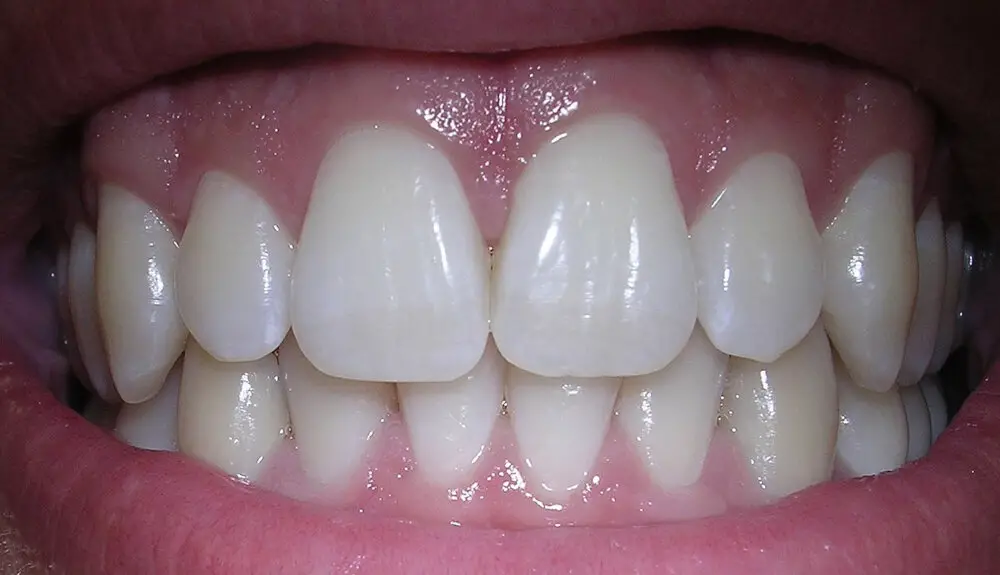
Apart from poor dental hygiene, there are several other factors that can cause teeth discoloration. One of the primary causes is the consumption of certain foods and drinks. Dark-colored beverages like coffee, tea, and red wine can stain the teeth over time. Similarly, foods with high pigmentation, such as berries, beets, and soy sauce, can also contribute to teeth discoloration. Smoking and tobacco use are also notorious for causing brown gum line and yellowing of teeth due to the nicotine and tar present in cigarettes. Additionally, certain medications, such as antibiotics, antihistamines, and chemotherapy drugs, can also cause teeth discoloration as a side effect. Another factor that can lead to brown gum line and teeth discoloration is age. As we age, the outer layer of our teeth, known as enamel, wears down, revealing the yellowish layer underneath, called dentin. This can cause teeth to appear dull and discolored, especially if proper dental care is not taken. Genetics can also play a role in teeth discoloration, as some people may naturally have thinner enamel or more porous dentin, making their teeth more susceptible to staining. Lastly, trauma to the teeth, such as a fall or impact, can cause discoloration due to the damage to the pulp and blood vessels in the tooth, which can result in a brown gum line. Understanding the various causes of teeth discoloration can help individuals take steps to prevent it and maintain a healthy, bright smile.
Food and drink stains are one of the main culprits behind teeth discoloration, particularly brown gum lines. Dark-colored beverages like coffee, tea, and red wine can leave stubborn stains on the surface of teeth, causing them to become discolored over time. Additionally, certain foods like berries, tomato sauce, and soy sauce can also contribute to staining. While brushing and flossing regularly can help prevent some staining, it’s important to be mindful of what you eat and drink to maintain a bright, healthy smile. If you do notice discoloration, there are a variety of whitening treatments available to help remove stains and restore your teeth to their natural shade.
Trauma to the teeth can cause discoloration, specifically a brown gum line. Trauma can come in the form of a hard hit to the mouth, a fall, or even biting down too hard on something. When trauma occurs, it can damage the blood vessels and nerves in the affected tooth, leading to the death of the tooth’s pulp. This dead pulp can cause the tooth to turn brown and the gum line to appear discolored. Treatment for trauma to the teeth can vary, depending on the severity of the injury. If caught early, a root canal may be able to save the affected tooth, but in more severe cases, the tooth may need to be extracted and replaced with a dental implant.
Excessive fluoride intake can cause brown gum lines or dental fluorosis. Fluoride is a mineral found in water, toothpaste, and some foods. While fluoride is beneficial for strengthening tooth enamel and preventing tooth decay, too much of it can cause tooth discoloration and brown gum lines. This condition occurs when the teeth absorb too much fluoride during the development stage, causing white or brown spots to appear on the enamel. In severe cases, the enamel may become pitted and discolored, which can be aesthetically unpleasing. To prevent brown gum lines and dental fluorosis, it is essential to monitor fluoride intake, especially in children who are more susceptible to this condition.
Certain medical conditions can contribute to brown gum line and teeth discoloration. For instance, individuals who have diabetes may have high blood sugar levels that can damage the blood vessels in the gums, leading to reduced blood flow and discoloration. Additionally, individuals with liver disease may develop yellowing of the skin and gums, also known as jaundice, due to the buildup of bilirubin in the body. Other medical conditions, such as anemia, can cause pale gums, while certain medications, such as tetracycline, can cause brown or gray staining of the teeth. It is important to consult with a dentist or physician if you notice any changes in the color of your gums or teeth, as this may be a sign of an underlying medical condition.
Brown gum line is a common dental issue that occurs due to the accumulation of bacterial plaque, tartar, and other harmful substances on the teeth. This condition can cause discoloration of the gum line, and can also lead to bad breath and gum disease. Symptoms of brown gum line include dark-colored gums, bleeding gums, and sensitivity to hot and cold foods and drinks. To prevent this condition, it is important to practice good oral hygiene, such as brushing and flossing regularly, and avoiding smoking and excessive alcohol consumption. Treatment options for brown gum line include professional cleaning, dental scaling, and root planing. In severe cases, surgery may be necessary to remove damaged gum tissue and restore a healthy gum line.
Seeking professional dental care for discolored teeth is crucial for maintaining oral health and a confident smile. Discoloration can be caused by a variety of factors, including genetics, medication, smoking, and poor dental hygiene. Brown gum lines, in particular, can indicate gum disease, which can lead to tooth loss if left untreated. A dental professional can diagnose the cause of the discoloration and provide appropriate treatment, such as teeth whitening, veneers, or gum disease treatment. Neglecting to seek professional dental care for discolored teeth can result in further damage to the teeth and gums, as well as a lack of confidence in one’s appearance. It is important to prioritize regular dental check-ups and seek professional care at the first sign of discoloration.
Conclusion
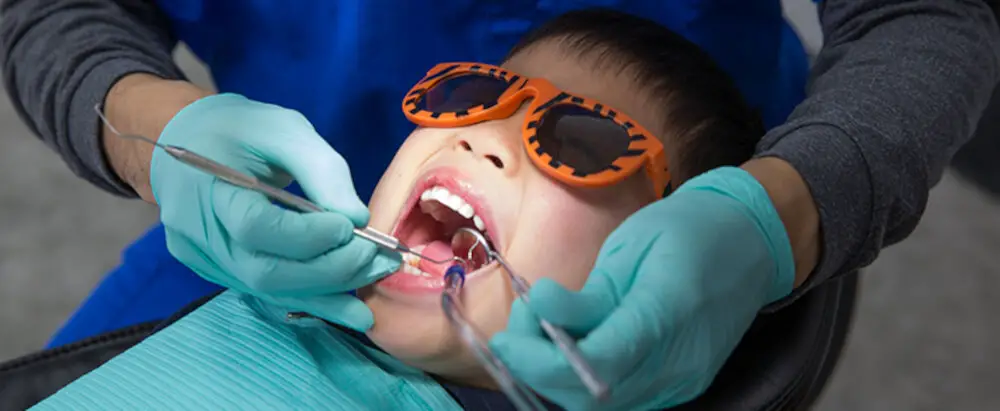
In conclusion, a brown gum line can be a sign of various underlying dental problems, ranging from poor oral hygiene habits to serious medical conditions. It is essential to understand the causes of teeth discoloration to prevent it from happening or to address it promptly if it occurs. Maintaining good oral hygiene practices, such as brushing and flossing regularly, can help prevent the buildup of plaque and tartar that cause brown gum lines. However, if discoloration persists, it is vital to seek the advice of a dental professional, who can provide effective treatment options. Remember, a healthy smile is a reflection of a healthy body, so take care of your teeth and gums, and maintain a vibrant and bright smile!





